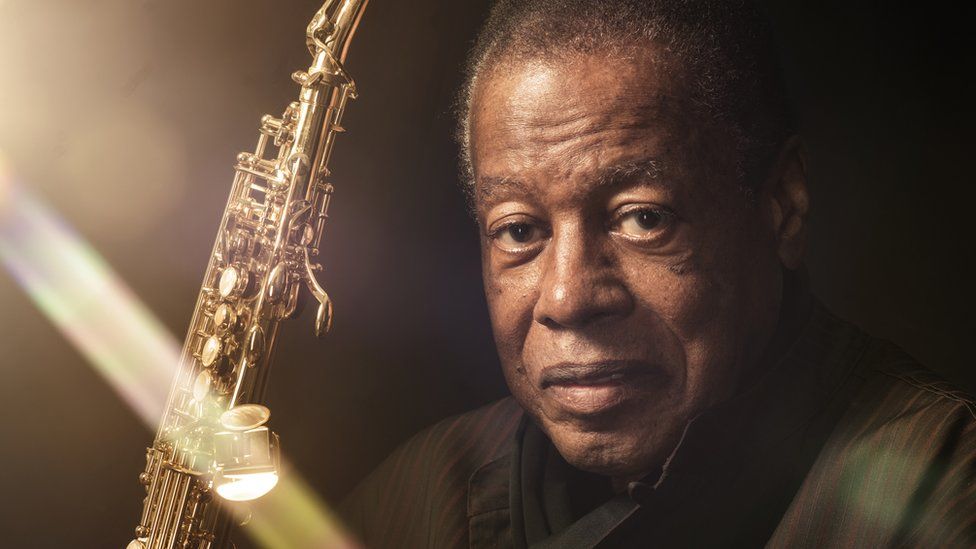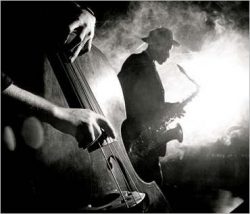Remembering Wayne Shorter
August 25, 1933 – March 2, 2023
A tribute to the innovative saxophonist and composer
Click here to Support Jazz on the Tube
Wayne Shorter passed away on Mar. 2, 2023, at the age of 89.
He was born on Aug. 25, 1933, in Newark, New Jersey, and began playing music on the clarinet as a teenager.
Shorter soon switched to tenor and in high school performed with the Nat Phipps Band.
He earned a degree in Music Education from New York University, served two years in the U.S. Army (playing briefly with Horace Silver), and after his discharge had a stint with the Maynard Ferguson Big Band.
Shorter made his recording debut on Aug. 12, 1959, on Wynton Kelly’s Vee-Jay album Kelly Great and led his first album three months later (Introducing Wayne Shorter) around the time that he began a five-year stint with Art Blakey’s Jazz Messengers.
While he had some of the same early influences as John Coltrane, Shorter quickly developed into a very original soloist and composer whose music (like that of Thelonious Monk’s) had its own logic and thoughtful approach.
Shorter soon became the musical director of the Jazz Messengers, playing alongside trumpeter Lee Morgan (and, after mid-1961, Freddie Hubbard), and contributing several songs to their repertoire including “Lester Left Town,”his tribute to the recently deceased Lester Young).
In 1964, Shorter began leading a string of influential and inventive albums for Blue Note that included Night Dreamer, Juju, Speak No Evil, (which included “Infant Eyes” and “Fee-fi-fo-fum”), The Soothsayer, Et Cetera, The All Seeing Eye, Adam’s Apple (which has the first version of his best known original “Footprints’), Schizophrenia, Super Nova, Moto Grosso Feio, and Odyssey Of Iska.
Also in 1964, Shorter left the Jazz Messengers and became a member of the Miles Davis Quintet.
In addition to giving Davis an inventive tenor-saxophone soloist, Shorter’s very original writing made Davis’ group into “his second great quintet” and was largely responsible for the unit performing original music rather than the standards they had previously recorded.
Wayne Shorter began doubling on soprano-sax in 1968 (becoming a leader on the instrument) and was with Davis when the trumpeter expanded his group and recorded the classic In A Silent Way and Bitches Brew albums.
In 1970 Shorter left Davis to begin co-leading Weather Report with keyboardist Joe Zawinul; his sounds on soprano and tenor would be an integral part of the pacesetting group during the next 16 years.
During that period he also recorded the Jazz/World Music classic Native Dancer and returned to acoustic jazz by touring with Herbie Hancock’s V.S.O.P.
After the end of Weather Report, Shorter freelanced for a time, recorded sparingly (although he was on a long series of Joni Mitchell albums), toured with Hancock as a duet, and had some success with his High Life album in 1995.
In 2000, Wayne Shorter formed a quartet with pianist Danilo Perez, bassist John Patitucci, and drummer Brian Blade that became his main outlet for the next 18 years; during that era, Shorter increasingly emphasized free improvisations.
In his later period Shorter wrote pieces for large ensembles and he co-wrote an opera with Esperanza Spalding called lphigenia.
In ill health and inactive as a player during his final few years, Wayne Shorter remained an inspiring force as a true individualist and for his fearless creativity, influencing a countless number of musicians.
This performance from 2014 features Wayne Shorter and his quartet on “Orbits” and “Prometheus Unbound.”
-Scott Yanow



